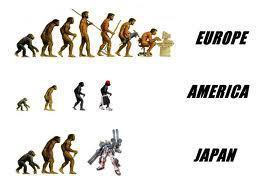How to be Funny if You’re Not–II
In Part I of How to be Funny if You’re Not, I discussed a book that provides humorous quips available to be adapted to your story. Today I want to talk about John Vorhaus’ book, Comic Toolbox(Silman-James Press 1994). I bought this book

Humor that works
because I wanted to see if there were guidelines for humor. I like steps, a plan, Rules A, B, C that will insure I achieve the right end result. And the book’s byline–”A funny idea is worthless until you understand the mechanics of its construction and execution. Meet Mr. Goodwrench.”–made it sound like I’d found my blueprint.
Besides being a successful comic writer for most of his life with credits for a variety of sitcoms, Vorhaus taught at a variety of Film-oriented schools including the American Film Institute. What he does in the book is distill his lifetime of comedy writing into a how-to toolkit on creating humor. He starts by analyzing humor, explaining why some lines are funny and others aren’t, with lots of examples. You can’t get bored reading this book because the moment it starts to feel like a textbook, it breaks out into a joke (What do you get when you cross a Jehovah’s Witness with an agnostic? Someone who rings your doorbell for no apparent reason). Here are some hints that made sense to me in my quest for humor:
mix truth with pain (A man falls off a cliff. As he plummets to his death, he’s heard to mutter, ‘So far, so good.’)
be willing to risk making yourself look stupid
for every ten jokes you tell, nine will be trash
the comic premise is the gap between comic reality and real reality (for example, in the comic strip Peanuts, there’s a gap between Snoopy’s ‘real’ reality–he’s a dog–and his ‘comic’ reality–he’s a World War I flying ace
humor through exaggeration (Jerry Lewis is the supreme bumbler)–and be bold about it
clash of context–a forced union of incompatibles–i.e., lunar golf course, Madonna sings opera
the wildly inappropriate response–For example, a backyard barbeque with militant vegetarianism, at a baseball game cheering for the vendors
the law of comic opposites
tension and release
Each chapter, he not only explains the comedic tool, he encourages the reader to practice the tool. For example, in the chapter, The Comic Premise, readers must write a mundane task (i.e., going to a store) and what would make that out of the ordinary (shopping for Uzis). Here’s one example I liked: a mundane event--the Magna Carta; out of the ordinary rejoinder–written by e.e. cummings.
In a nutshell, Vorhaus breaks comedy down into its bits and pieces. Yes, some people are blessed with the comic gene, a funny bone that turns life into a laugh tape, but the rest of us need help. Since I’m a firm believer that every story goes better with a sense of humor (I get a lot of my funny-isms from my naturally-talented husband), you’ll want to spend a couple hours with this book.
PS–I didn’t steal his subtitle. It probably isn’t the first time two minds came up with the same thought. Admittedly, he was first.
Jacqui Murray is the editor of a technology curriculum for K-sixth grade, creator of two technology training books for middle school and three ebooks on technology in education. She is the author of Building a Midshipman , the story of her daughter’s journey from high school to United States Naval Academy midshipman. She is webmaster for six blogs, an Amazon Vine Voice book reviewer, a columnist for Examiner.com , Editorial Review Board member for Journal for Computing Teachers, IMS tech expert, and a weekly contributor to Write Anything. Currently, she’s editing a thriller for her agent that should be out to publishers this summer. Contact Jacqui at her writing office or her tech lab, Ask a Tech Teacher.
Filed under: book reviews, humor Tagged: book review, humor, writing humor











